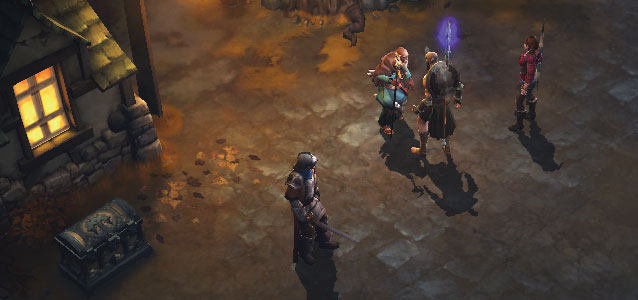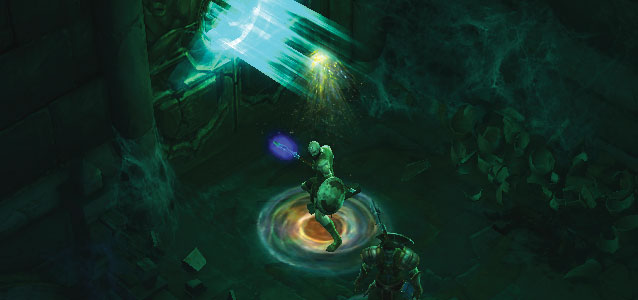


Yesterday, Gamespy's Bennett Ring wrote an incendiary article asking the question, "Should Diablo III have been first person?" By now, your forehead's probably already creased from having read those words. It's a misguided proposition, and one I'll happily refute. Having played Diablo since its initial release in 1996, its follow-up Diablo II, and lately—the Diablo III beta, I feel qualified to talk about the subject.
Bennett may have concluded in his article that Diablo III shouldn't be in first person, but his reasoning for that and my own are completely different.
Bennett argues that he'd prefer to see Diablo III in the first person view, citing Fallout 3 as an example of the kind of immersive experience he's looking for. Darkened hallways, narrow corridors, monsters leaping out of the darkness and onto your face—in the first person. There is a kind of irony in using Fallout 3 as a suggestion for what a traditionally isometric—or top-down—game like Diablo III should actually be, especially when you consider the fact that the original Fallout games shared a similar perspective. Fans of the Fallout series have long argued that the third game would not be faithful to the franchise because of the change, and although many of them were loud and even unreasonable, they were essentially correct in their assessments. Fallout 3 manages to be its own game for what it offers, but it isn't the same as Fallout 1 and 2, and the series arguably is arguably weaker, and less distinct for it.
Returning to Diablo, the series' original creators—Blizzard North—shared Bennett's "first person equals more immersion" philosophy when they developed Hellgate: London at Flagship Studios. Like Bennett's example, Hellgate: London sounds good on paper—it has more immersion, and like Conan the Barbarian you can tear off your faces of your enemies and hear the lamentation of the women who cry for them, all in first person. Unfortunately, the game grew stale with its repetitive environments, claustrophobic tunnels, and stale combat mechanics. Pointing and shooting at things can only be fun for so long in a glorified slot machine, which is what any Diablo game would be if it wasn't for its isometric perspective—among many other qualities unique to Diablo.

Bennett argues about the game's challenge, or lack thereof. He cites a friend's experience—and not his own—that the previous games didn't get much tougher than the initial experience. From my personal experience, the difficulty of the previous games varies depending on the class you play, your load out, and the skills at your disposal. All of this in addition to the game's three difficulty modes—four, in Diablo III. An Amazon would thrive in Act 3 of Diablo II, where ranged weaponry is king—or rather, queen, in her case; whereas she would suffer had she to face foes less vulnerable to her ranged, elemental attacks.
Bennett further argues that the game should be more difficult in one-on-one fights. It's an interesting sentiment, and one that's not completely out of place. After all, it's necessary for first person shooters and third person action games to be a bit on the tough side, if only to prevent monotony from setting in. What is a game, after all, if not a challenge?
But who says games have to be just one way? There are many kinds of games, and Diablo III doesn't have to have the same qualities as Call of Duty or Fallout 3 to be a great game. Diablo III doesn't need to fit the mold of any other game other than its own.
Diablo III is an action figure game. The character you're playing is an action figure that you can dress up with new suits of armor, and equip with new weapons and spells to vanquish the hordes of demons who quite simply exist for your amusement. A game like Diablo III doesn't need to be "immersive" in the same way that first person shooters are. It is simply a different breed of game, and making it like anything else would only weaken it. It's is great at being what it is—Diablo III.



